Preset Wrist Brace
Sustainable Material Innovation - 2 weeks

Assignment:
Use material exploration and research as a springboard for new ideas and designs. With a focus on sustainability and a budget of $10, chose one recycled, sheet material from Resources for R.I. Education. From experimentation, create a way to repurpose this material into a new functional design.

Methods of experimentation: cutting, scoring, folding, braiding, weaving, sewing, melting, freezing, etc.
Research:
The material I chose was a beige vinyl-like, faux-leather paper. It came in a large roll with a width of 8" and a material thickness of 1/32". Through various methods of experimentation, I came to understand several properties of this material.





Ideation:
After exploring the material itself, I decided to focus in on a particular experiment that held interesting possibilities. There was a connection joint technique that allowed the material to grip an organic form. The biggest concern was that it could only hold a singular object.
From this technique, I decided on a knee brace. After further testing, the knee brace using this technique proved to be too troublesome. The user would have to loop the brace over their foot before being able to tighten it. After this realization, I transitioned to wrist braces.

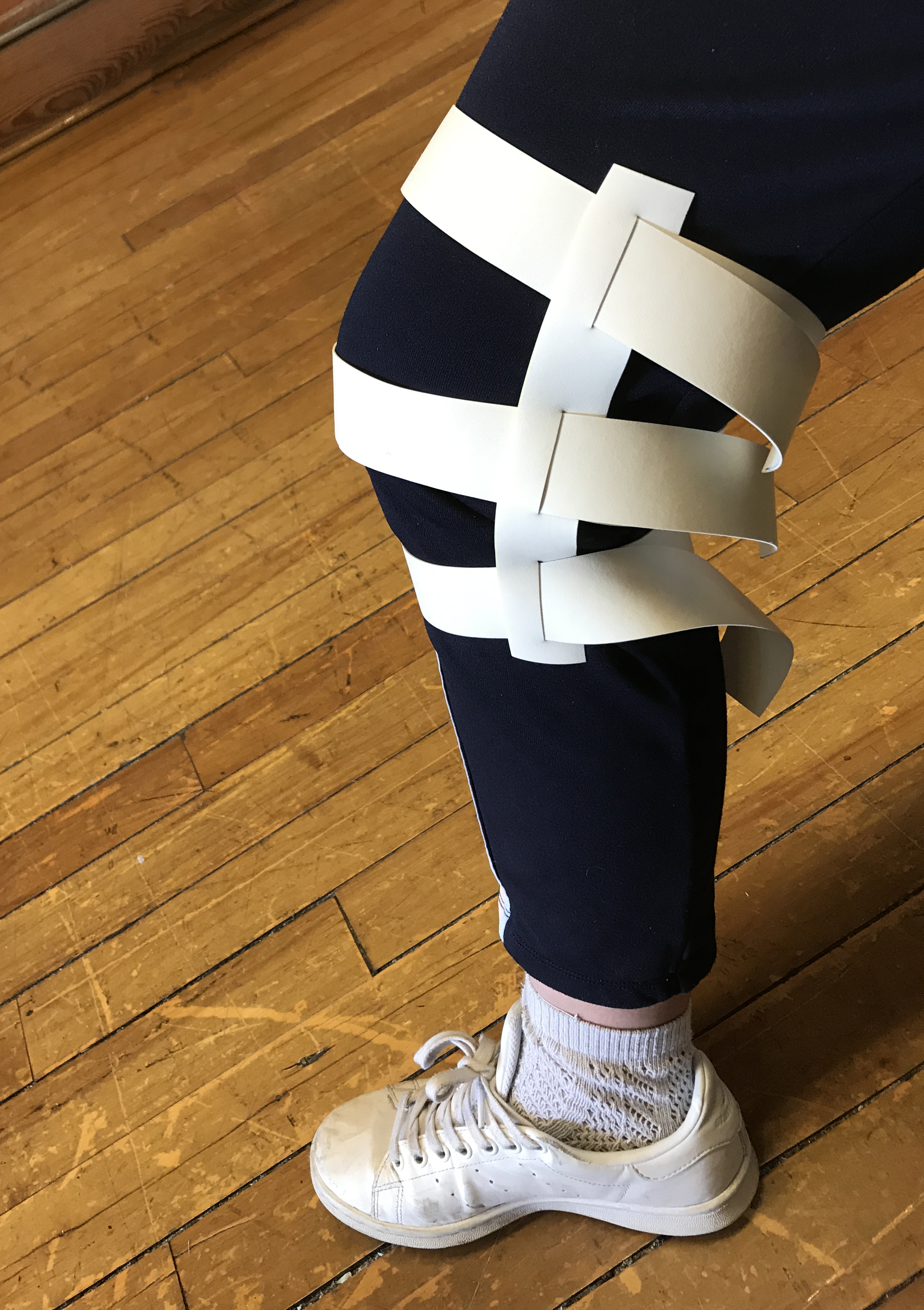
Iteration:
After settling on the wrist brace, I researched current braces to see how they are single-handedly tightened as well as what parts of the wrist need to be supported. Most braces utilize fabric or other more flexible materials, as a result I decided to create my own pattern for the brace.

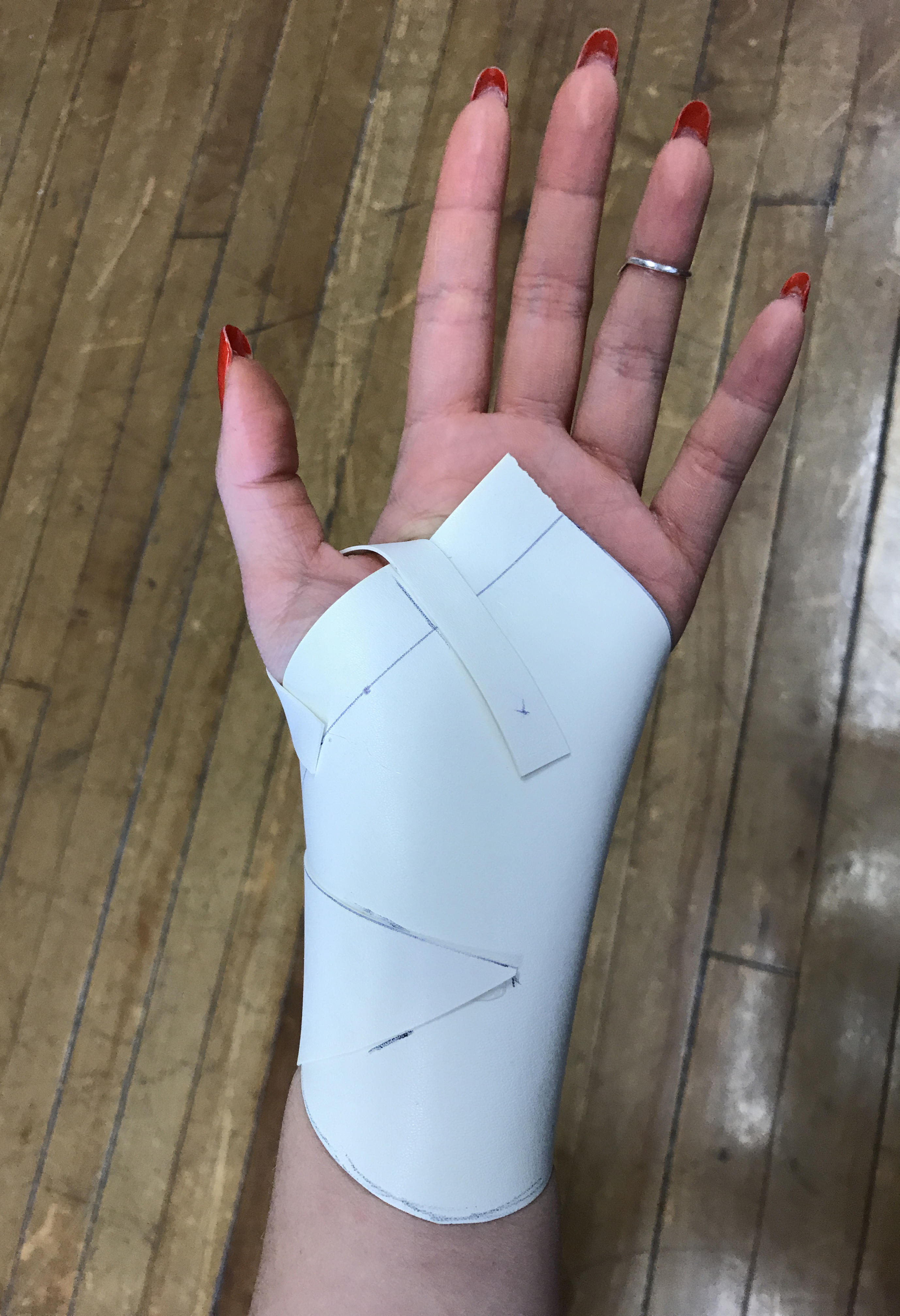

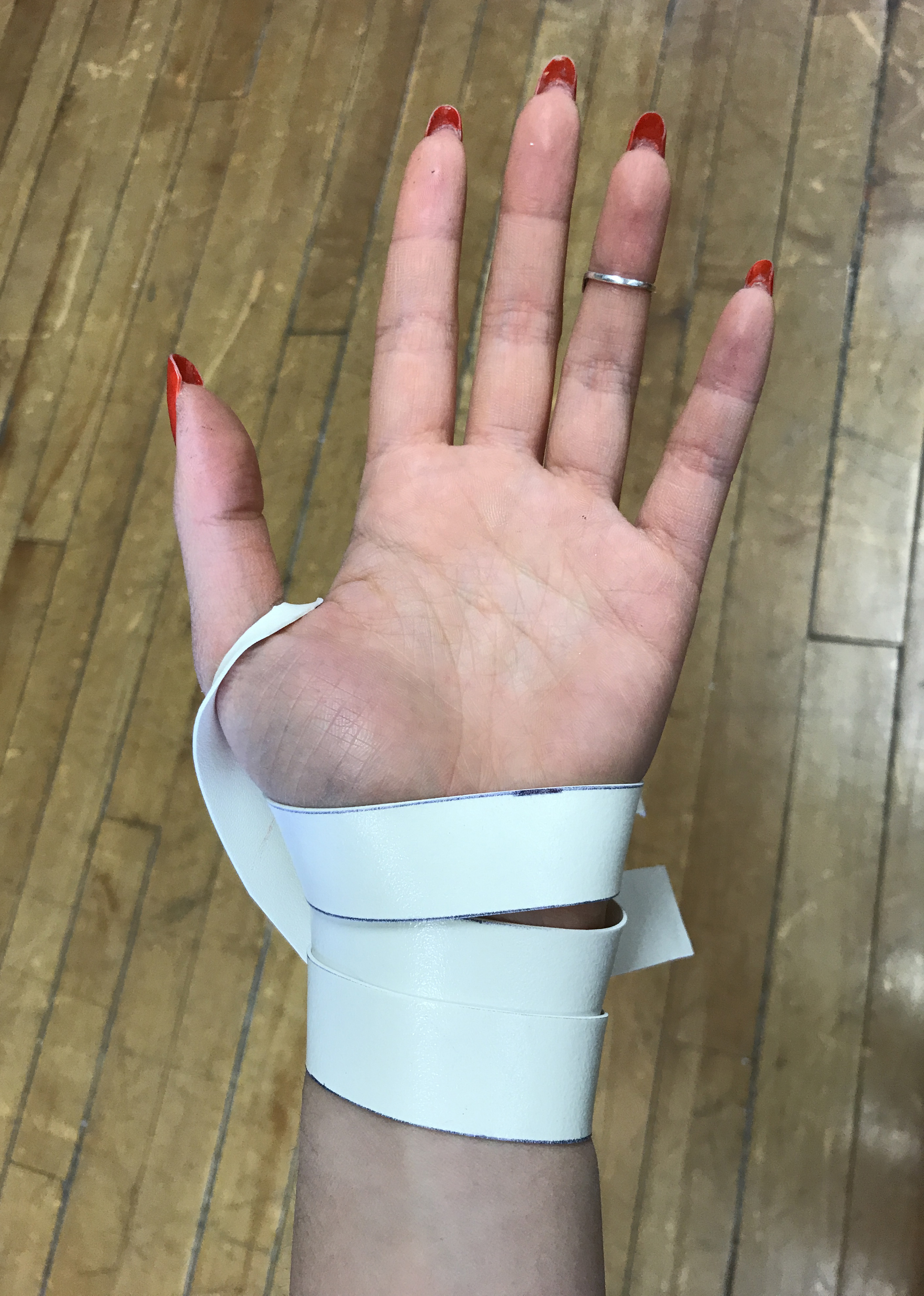
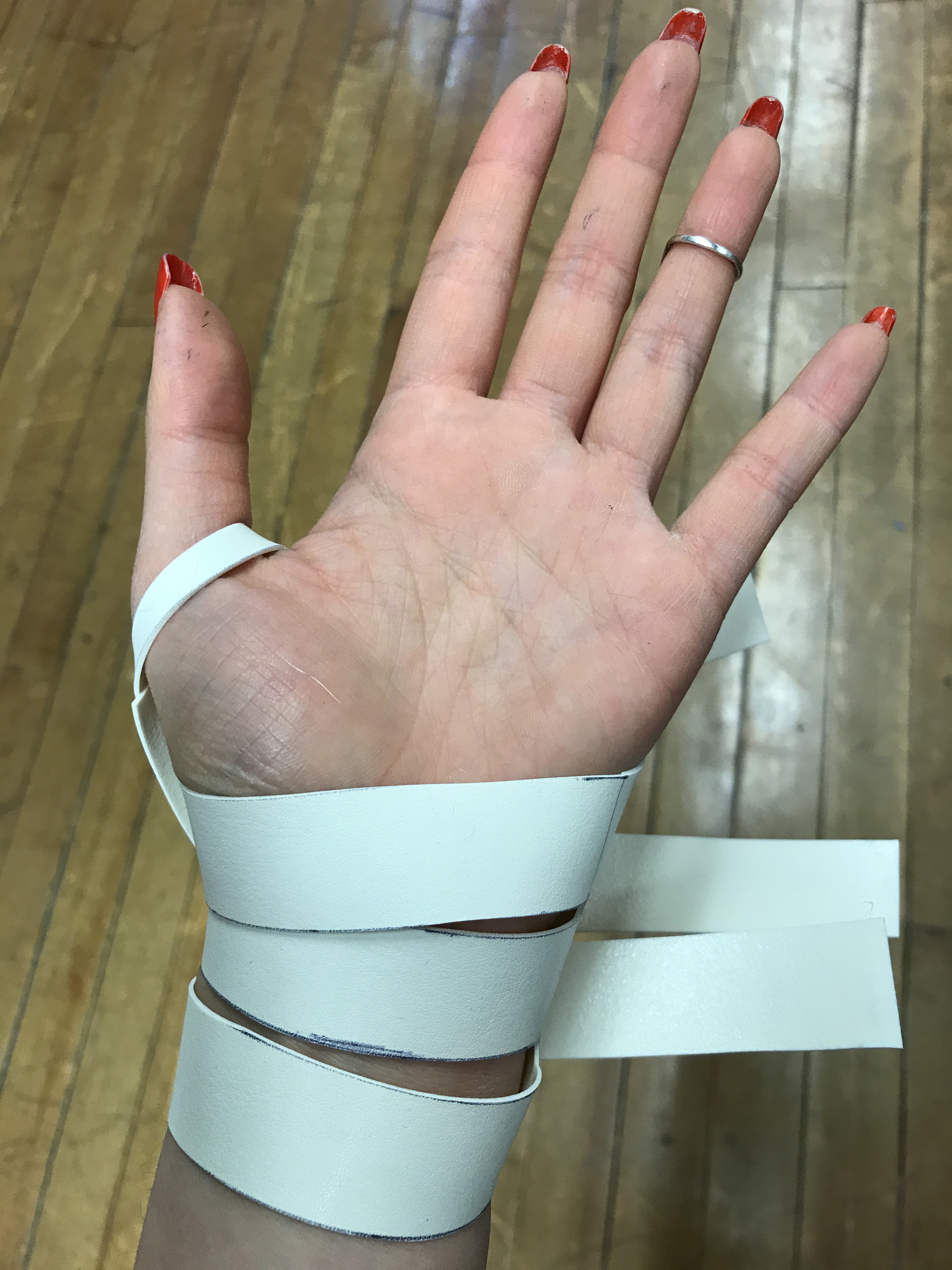

Final:
Through several iterations, I explored various thumb holes as well as slot points and strip widths until I came upon my final design. A wrist brace that allows for the user to preset the tension of individual parts of the brace. This allows for the user to put the brace on more easily as they only have to tighten the preset tab rather than each individual strip.

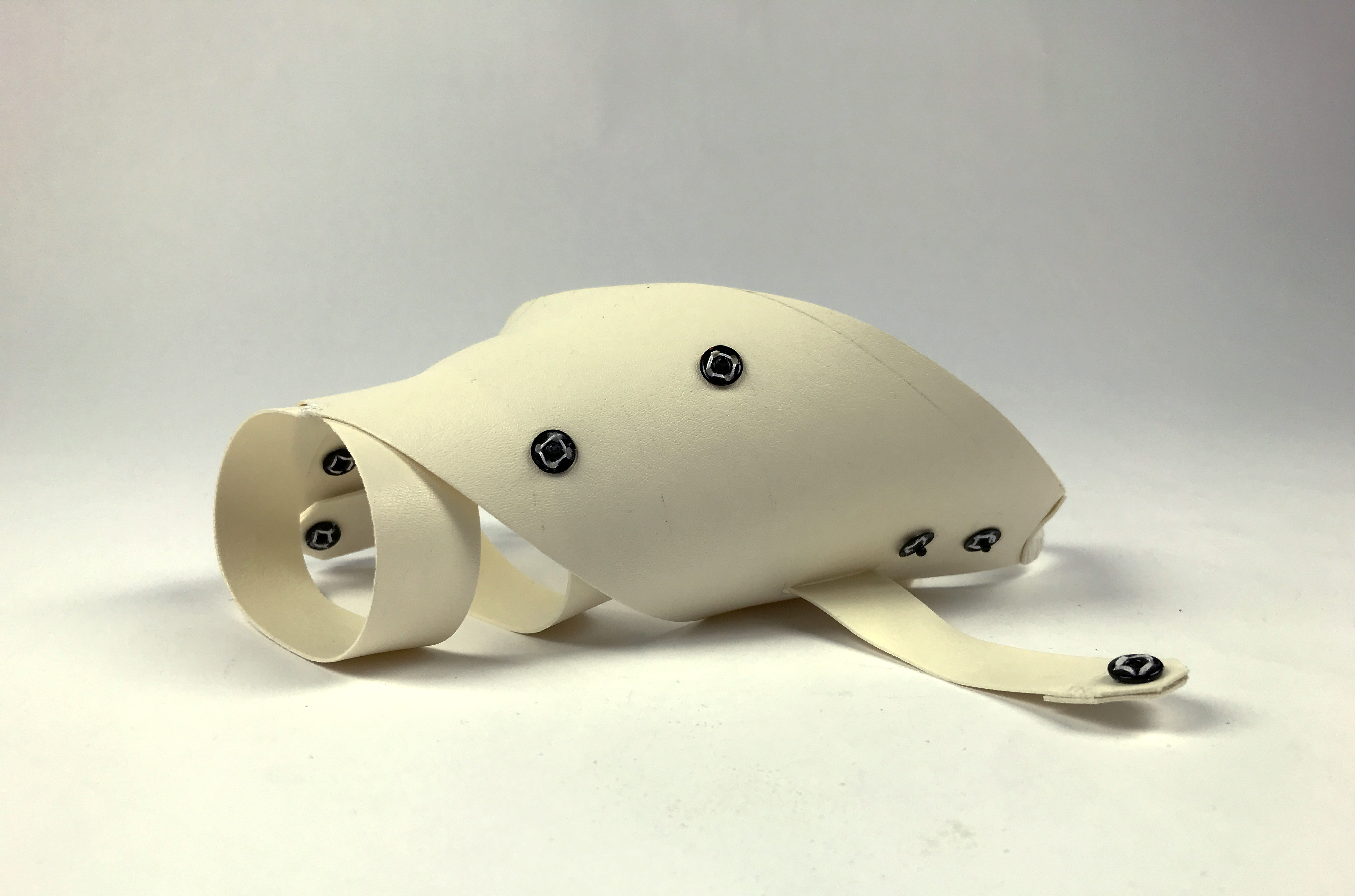




Additional thoughts:
More testing needs to be done to determine the fit and proportions of the brace. This brace pattern could be open-source for people who need to quickly make their own wrist brace from a flat sheet of material.
Design Principles II with Beth Mosher - Spring 2018
Contact me at jillianmcai@gmail.com